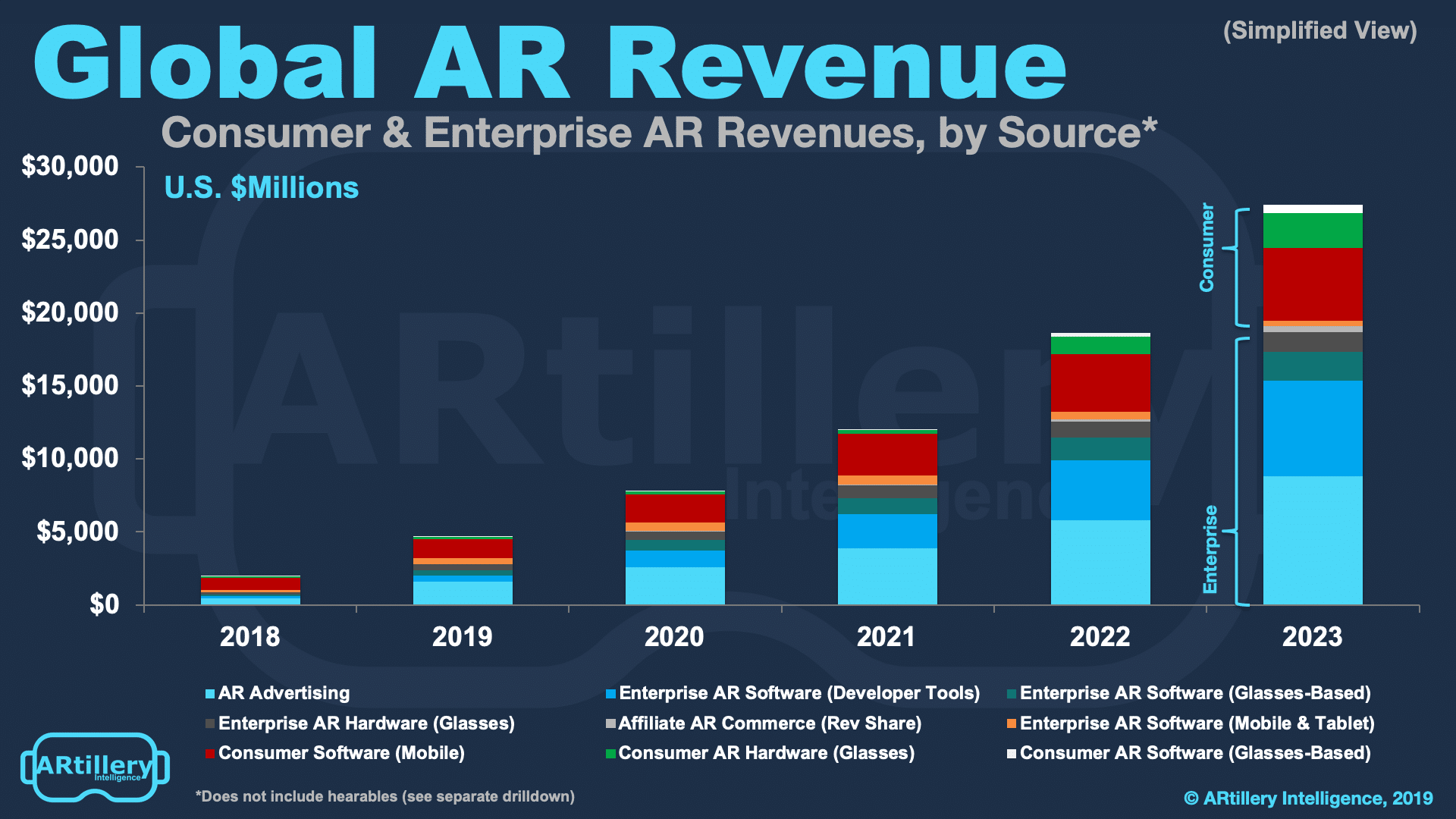
Data Point of the Week is AR Insider’s dive into the latest spatial computing figures. It includes data points, along with narrative insights and takeaways. For an indexed collection of data and reports, subscribe to ARtillery Pro.
Update, 8/26: Snapchat has released Lens Studio 2.1 including additional templates and landmarkers. Details can be seen here.
In the early stage AR market, few companies are producing real revenue. One of those is Snapchat, which is a leader within the leading AR revenue category of advertising. According to our research arm ARtillery Intelligence, AR advertising revenues were $453 million last year.
But within that value chain, AR lens ad networks — predominantly Snapchat and Facebook — aren’t the only ones making money. The art of lens creation itself is getting relatively lucrative. “Relatively” is the operative term, as the revenue levels aren’t on the industry-scale above.
But in terms of personal income for lens creators, it’s become a notable subset of the ecosystem. Specifically, graphic designers (and design firms) within Snap’s selected group of about 100 official lens creators can bring in as much as $40,000 per month from branded AR lens creation.

The way this works is that Snapchat has created the small network of designers to which it refers brand advertisers that wish to create AR lens campaigns. Snapchat doesn’t take a cut of the creation fee, but it benefits from lens creation in its downstream ad placement revenue.
This also helps its ad sales execs go out and sell brands on AR lens campaigns because they can connect those brands with designers to fulfill the creative work. That’s a key factor at this early stage when many brands are otherwise unfamiliar with and intimidated by the new format.
Still, brands are getting AR-curious after seeing attractive performance metrics from AR campaigns run on Snapchat and Facebook by pioneering advertisers like Michael Kors, Gatorade and Jordan Brand. Snap is greasing the wheels a bit with the creative network.
Those designers are also sitting pretty. Not only is it proving relatively lucrative, but that will only increase as their skills are in greater demand. The demand side of that equation will grow with increased brand interest, and more distribution channels, such as Instagram’s recent entrance.

Of course, those demand signals could end up attracting more developers that saturate the market, in which case their rates will go down. But overall, it seems the marketplace is favoring the bold. Graphic designers who picked up Lens Studio (and Spark AR), are finding it a salable skill.
We’ll keep watching for the above supply/demand dynamics. The time is ripe as Instagram just opened the closed beta for Spark AR developers. Just like we saw when Snapchat did the same, the extra AR lens volume and creativity should gain lots of traction on the camera-forward app.
And the lens creation skillset of those Snap-endorsed designers will transfer over to Instagram, assuming they’re not bound by exclusivity clauses (questionably legal in many states). Many of them will be hired hands across all these networks and other AR sleeping giants like TikTok.
It seems that it’s a good time to be a lens developer.
For deeper XR data and intelligence, join ARtillery PRO and subscribe to the free AR Insider Weekly newsletter.
Disclosure: AR Insider has no financial stake in the companies mentioned in this post, nor received payment for its production. Disclosure and ethics policy can be seen here.
Header Image Credit: Snap, Inc.
